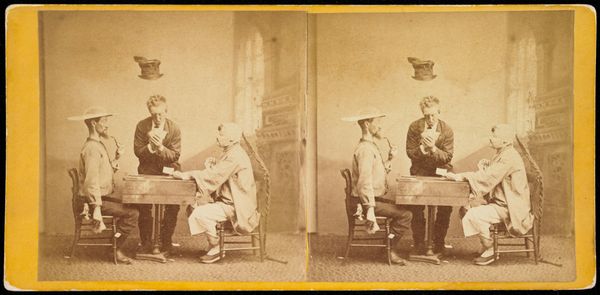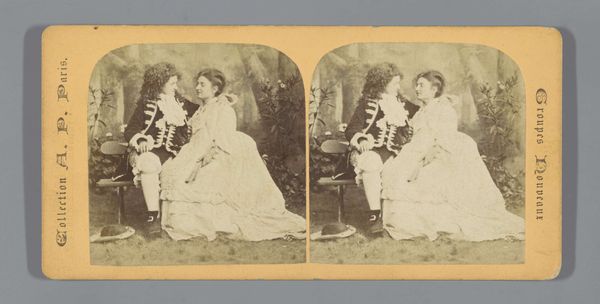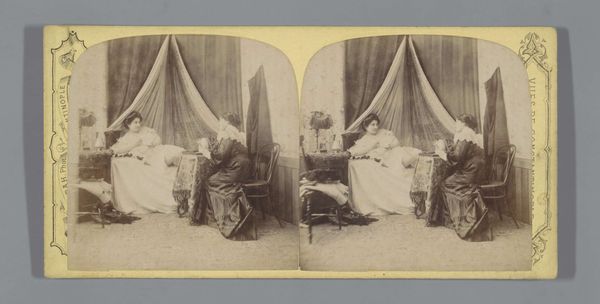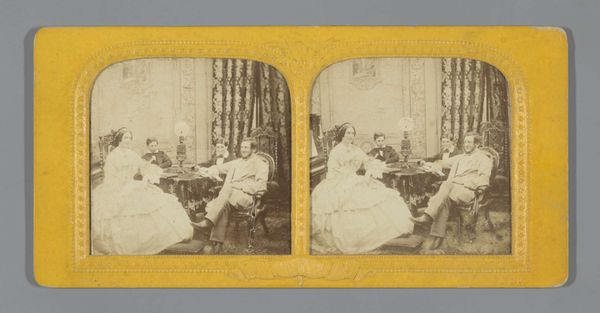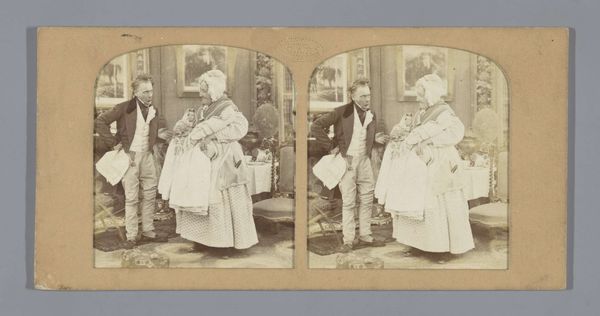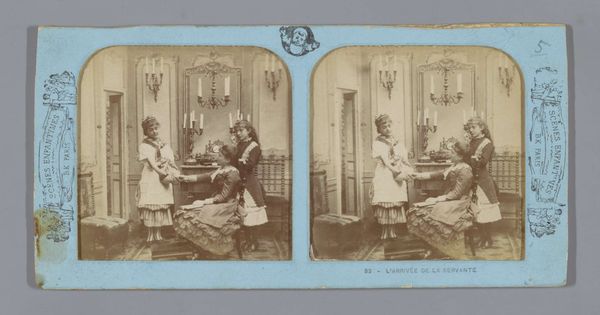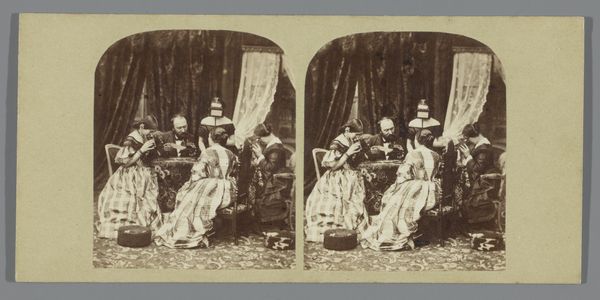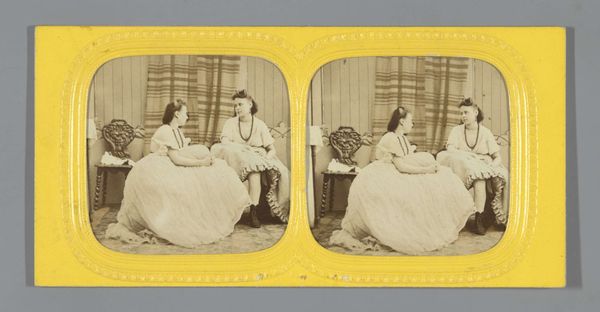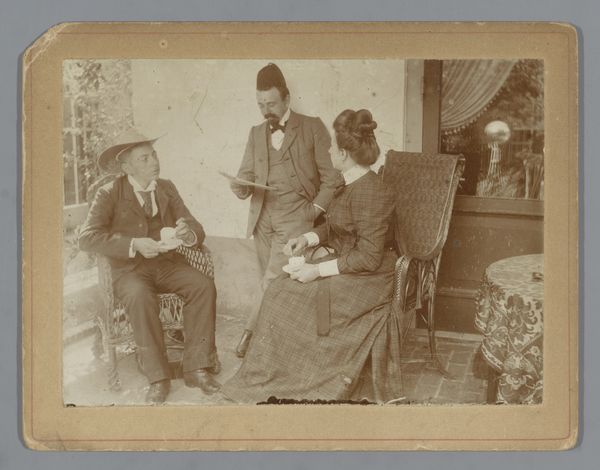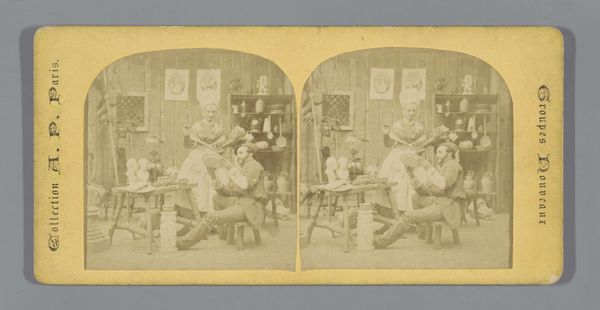
photography
#
portrait
#
photography
#
genre-painting
Dimensions: 3 1/4 x 2 9/16 in. (8.26 x 6.51 cm) (image, each)3 3/8 x 6 7/8 in. (8.57 x 17.46 cm) (mount)
Copyright: Public Domain
Curator: My eyes are drawn to the subtle interplay of light across the duo. The muted tones—umber and sepia—infuse it with a sentimental stillness. It's quite formal, don't you think? Editor: Formally, yes, the composition and controlled palette speaks to the constraints of the photographic technology of the era. However, the symbolism resonates more deeply with cultural scripts surrounding leisure and gender roles. Here we have J. Gurney’s photograph "How Is That For High-," created between 1869 and 1874, on display here at the Minneapolis Institute of Art. Curator: "How Is That For High-"…intriguing title. Tell me, what symbolic reading do you ascribe to this staged domestic scene? Editor: Note how she sits erect in a posture that contrasts with the way he slouches, engrossed in trimming a pen, his actions shadowed as her accessories almost gleam. Her feathered hat and detailed dress become visual markers of domestic refinement and consumer prowess in that period. Curator: So, are you suggesting the trimming symbolizes perhaps not just functional work but some deeper masculine engagement—of creation maybe, or something similarly self-expressive? And on the opposite site the woman with the accessories embody consumption and display? Editor: The cultural trope is unavoidable. Even the photographic angle serves. He’s slightly hidden, while she becomes part of the broader environment meant for viewing. It emphasizes conventional societal positioning and visibility of both figures. It touches on gender norms of labor and decorative expression, particularly within middle-class expectations. Curator: Do you perceive these choices as commentary by Gurney or as an endorsement? Does photography at the time always align to that societal norm? Editor: This is more documentary in practice. He’s capturing what exists but making the image appealing to those subscribing to such lifestyles. One also considers the power the subjects exerted: their poses, positioning--even what elements would appear made those early photography sessions exercises in negotiation Curator: Interesting…the photograph almost serves as a tableau, illustrating the dynamic, not quite captured and not always aligned. Editor: Precisely. Such tensions make us examine how historical roles still resonate and evolve even now. Curator: Definitely gives one much food for thought in reflecting not just upon photographs, but photography itself in its context!
Comments
No comments
Be the first to comment and join the conversation on the ultimate creative platform.
